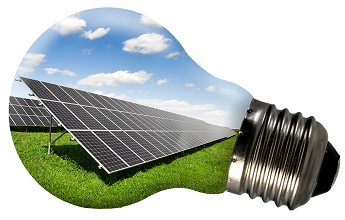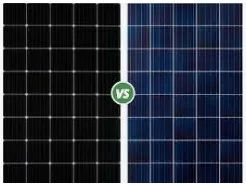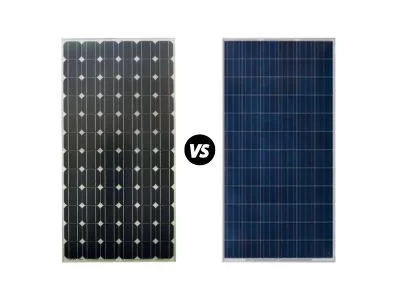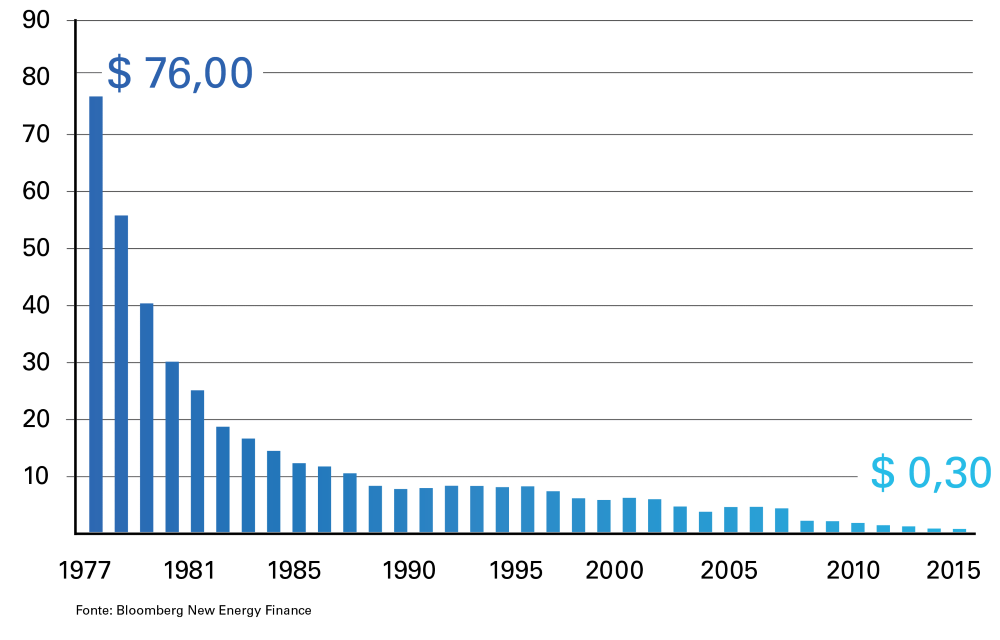Solar panels have gained widespread recognition as an eco-friendly and renewable energy source. Monocrystalline solar panels are one of the most efficient types of solar panels available today. We will provide a comprehensive guide on monocrystalline solar panels, including their features, benefits, drawbacks, and how they differ from other types of solar panels.
What are Monocrystalline Solar Panels?
Manufacturers create monocrystalline solar panels from a single silicon crystal. They grow these crystals in a cylindrical shape, slice them into thin wafers, process the wafers into solar cells, and finally assemble them into solar panels.

How do Monocrystalline Solar Panels Work?
Monocrystalline solar panels work by converting sunlight into electricity. When sunlight hits the solar panel, it creates an electric field in the solar cells. This electric field causes the electrons in the solar cells to move, creating an electrical current. The inverter then receives the electrical current and converts the direct current (DC) into alternating current (AC), which can power homes and businesses.
Advantages of Monocrystalline Solar Panels
There are several advantages of using monocrystalline solar panels:
- High Efficiency: This type of panels have a higher efficiency rate compared to other types of solar panels, which means they can generate more power per square foot of space.
- Durability: They are more durable and long-lasting than other types of solar panels. They can withstand harsh weather conditions such as hail, snow, and high winds.
- Space Efficiency: Monocrystalline solar panels require less space to generate the same amount of power compared to other types of solar panels.
- Aesthetically Pleasing: They have a sleek and uniform appearance, making them more aesthetically pleasing.
Disadvantages of Monocrystalline Solar Panels
There are also a few disadvantages of using monocrystalline solar panels:
- Cost: These panels are more expensive than other types of solar panels due to their higher efficiency and durability.
- Temperature Sensitivity: These solar panels are less efficient in hot temperatures. The efficiency of the solar panels decreases as the temperature increases.
- Production Process: The production process of monocrystalline solar panels is energy-intensive and involves high levels of waste.
Monocrystalline vs. Polycrystalline Solar Panels

To make polycrystalline solar panels, manufacturers melt multiple silicon crystals together, forming the solar cells. Polycrystalline solar panels are less efficient than monocrystalline solar panels but are more affordable.
Monocrystalline vs. Thin-Film Solar Panels

Manufacturers create thin-film solar panels by depositing layers of photovoltaic material, such as cadmium telluride or copper indium gallium selenide, onto a substrate.They are less efficient than both monocrystalline and polycrystalline solar panels, but they are lightweight and flexible, making them suitable for certain applications where other types of solar panels are not feasible.
How to Choose the Right Monocrystalline Solar Panel
When choosing a monocrystalline solar panel, there are several factors to consider, including:
- Efficiency: The efficiency of the solar panel will affect the amount of power it can generate. Choose a solar panel with a higher efficiency rate if you have limited space for installation.
- Size: The size of the solar panel will depend on your energy needs and available space. Choose a solar panel that can meet your energy demands and fits within your available space.
- Durability: Look for solar panels with a high durability rating to withstand harsh weather conditions and last for many years.
- Manufacturer Warranty: Review the manufacturer’s warranty to make sure it covers you in case of defects or damage.
Installation and Maintenance of Monocrystalline Solar Panels
Installing monocrystalline solar panels requires professional installation. Mount the solar panels on a sturdy surface, like a roof or a pole, and connect them to an inverter to convert the DC electricity into usable AC electricity.Maintenance of the solar panels includes cleaning the surface of the solar panels regularly and checking for any damage or defects.
Applications of Monocrystalline Solar Panels
Monocrystalline solar panels are suitable for various applications, including:
- Residential Solar Power Systems: These solar panels can be used in residential solar power systems to provide electricity for homes.
- Commercial Solar Power Systems: Also can be used in commercial solar power systems to provide electricity for businesses.
- Off-grid Power Systems: Monocrystalline solar panels can be used in off-grid power systems, such as RVs or boats, to provide electricity without relying on traditional power sources.
Monocrystalline Solar Panel Cost
The cost of monocrystalline solar panels varies depending on the manufacturer, efficiency, and size of the solar panel. On average, a monocrystalline solar panel can cost between $200 and $400 per panel.

Future of Monocrystalline Solar Panels
The future of monocrystalline solar panels is bright. With advancing technology, experts expect the efficiency of them to increase, making them even more cost-effective and appealing for widespread use.
Conclusion
Monocrystalline solar panels are a highly efficient and durable type of solar panel that is suitable for various applications. They are more expensive than other types of solar panels but provide higher efficiency and a longer lifespan. When choosing a monocrystalline solar panel, consider factors such as efficiency, size, durability, and manufacturer warranty. With professional installation and proper maintenance, these solar panels can provide clean and renewable energy for many years to come.
FAQs
What is the lifespan of monocrystalline solar panels?
- These type solar panels can last up to 25 years or more with proper maintenance.
How much energy can a monocrystalline solar panel generate?
- The amount of energy a monocrystalline solar panel can generate depends on the size and efficiency of the panel.
Are monocrystalline solar panels suitable for cold climates?
- Yes, they can perform well in cold climates, but their efficiency may decrease in extremely low temperatures.
What is the difference between monocrystalline and polycrystalline solar panels?
- Monocrystalline solar panels are made from a single crystal of silicon, while polycrystalline solar panels are made from multiple crystals of silicon. This type solar panels are more efficient but more expensive, while polycrystalline solar panels are less efficient but more affordable.
Can monocrystalline solar panels be used in off-grid power systems?
- Yes, they can be used in off-grid power systems to provide electricity without relying on traditional power sources.
People also ask
Are monocrystalline solar panels the best?
- Monocrystalline solar panels are among the best types of solar panels available due to their high efficiency, durability, and aesthetics. However, whether they are the best choice for a specific project depends on factors such as budget, available space, and energy needs.
Which is better monocrystalline or polycrystalline solar?
- Monocrystalline solar panels are generally considered to be better than polycrystalline solar panels due to their higher efficiency and more uniform appearance. However, polycrystalline solar panels are typically less expensive, and may be a better option for those on a budget.
What is the disadvantage of monocrystalline solar panel?
- The main disadvantage of monocrystalline solar panels is their higher cost compared to other types of solar panels. They also have a slightly lower temperature tolerance than some other types of solar panels.
What is the monocrystalline solar panel?
- These type solar panels are a type of photovoltaic cell made from a single crystal of silicon. They are known for their high efficiency and uniform appearance.
Why is monocrystalline better?
- Monocrystalline solar panels are better than other types of solar panels due to their high efficiency, durability, and uniform appearance. They are able to generate more electricity from the same amount of sunlight, and their sleek appearance makes them a popular choice for homeowners looking to increase their property value.